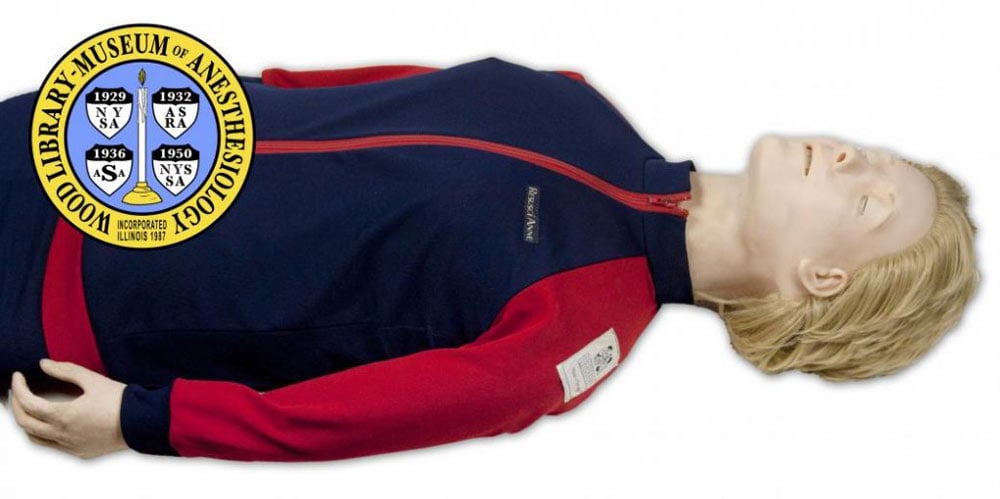
Photo Credit: Wood Library Museum of Anesthesiology https://www.woodlibrarymuseum.org/museum/resusci-anne/
500 million people have used this invention and likely had no idea that a Norwegian toymaker had a hand in its development. Resusci Annie, also known as a CPR dummy, was developed in Norway in the 1950s.
The Inventors
A self-made Stavanger businessman, Åsmund S. Lærdal launched a greeting card business in 1940, and moved into wooden and later flexible plastic toys. In the mid-1950s Lærdal moved from enriching childhoods to sustaining lives when he began developing anatomically correct medical aid devices with anesthesiologist Bjørn Lind. Starting with artificial wound training simulations in collaboration with the Red Cross and Norwegian Civil Defense, in 1960 the pair developed and released the medical simulator known as Resusci Anne (later Annie). The practice mannequin was used to safely teach mouth-to-mouth resuscitation and airway ventilation techniques, a medical revolution at the time. Later the mechanism for chest compressions was incorporated in conjunction with a group of Baltimore engineers.
The manufacture of medical training aids wasn’t just a theoretical mission; Lærdal had personal motivation to increase the public’s knowledge of lifesaving measures: he had rescued his own son Tore in a near-drowning incident.
The Famous Face
Lærdal struggled to design the face for the mannequin and the inspiration for the face was based on a teenage girl who had died in Paris in 1890, called “the Unknown Woman of the Seine.” Her expression appeared so serene that her death mask, initially produced to attempt to identify her, was later sold across the continent as a work of art. Lærdal saw one of these masks in Norway, and decided to model his medical mannequin after the face that was familiar to many. The first resuscitation model was named Anne, after one of Lærdal’s previous toy dolls, and finally the unknown girl had a name.
Training Leads to Acceptance
The use of a life-sized doll rather than other humans helped the public accept resuscitation as a valuable life-saving measure. Lærdal and Lind immediately began teaching mouth-to-mouth resuscitation in Stavanger area schools and found that 73% of students who had learned using the mannequin could achieve successful results three months later. Public acceptance grew as Lærdal and Lind published every successful resuscitation in the local paper.
Thanks to Lærdal’s innovation, mouth-to-mouth resuscitation and CPR were soon adopted across the world as an essential part of first aid.
Sources:
https://en.wikipedia.org/wiki/Resusci_Anne
https://emsmuseum.org/collections/archives/education-simulation-and-training/resusci-annie/
https://www.livescience.com/cpr-doll-resusci-annie-face.html
https://one-million-lives.com/the-laerdal-commitment/
https://www.simulationinformation.com/hall-of-fame/members/hall-of-fame-inductees-asmund-s-laerdal/
https://www.cambridge.org/core/services/aop-cambridge-core/content/view/S1049023X00043569
